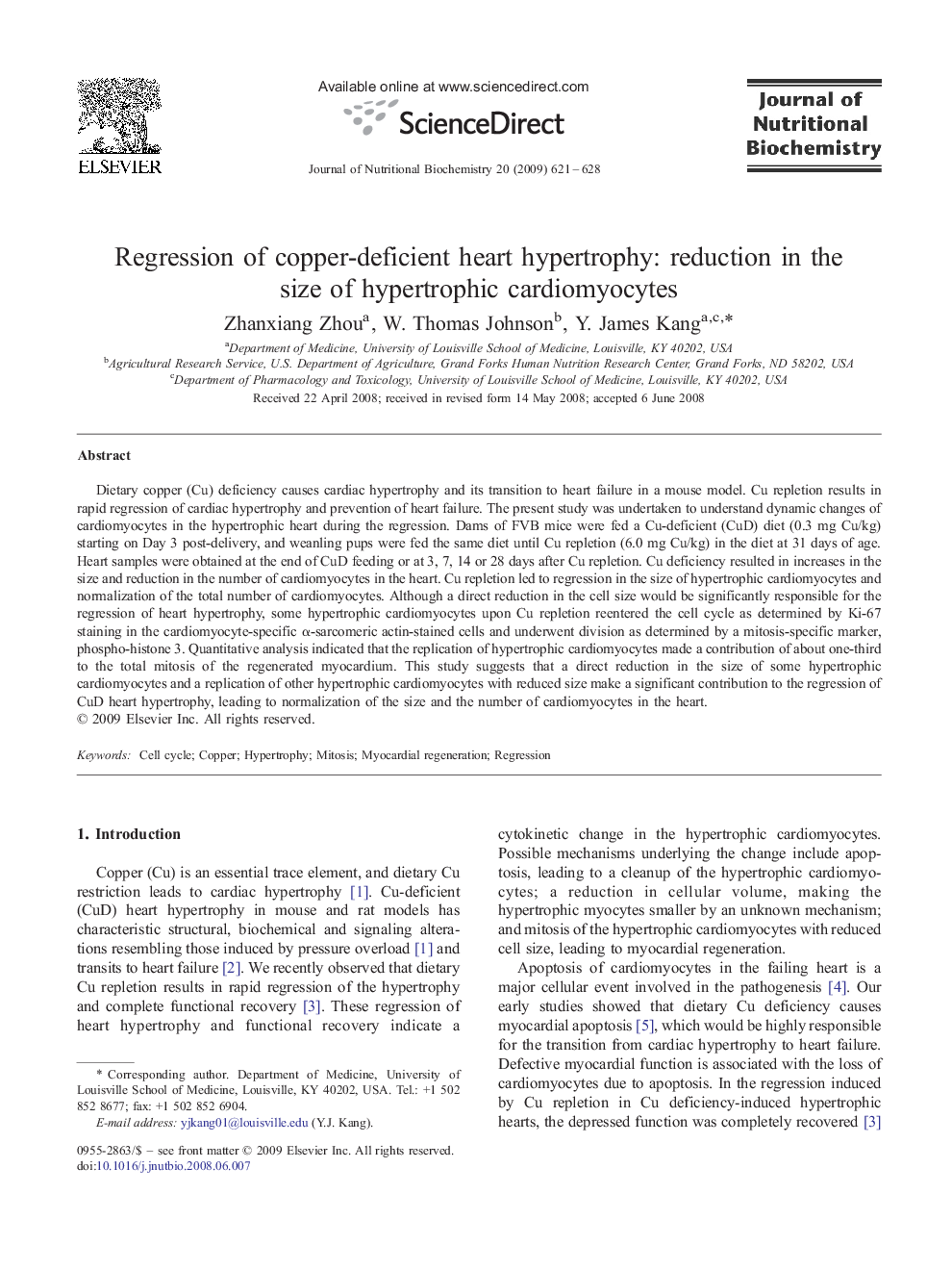| Article ID | Journal | Published Year | Pages | File Type |
|---|---|---|---|---|
| 1990400 | The Journal of Nutritional Biochemistry | 2009 | 8 Pages |
Dietary copper (Cu) deficiency causes cardiac hypertrophy and its transition to heart failure in a mouse model. Cu repletion results in rapid regression of cardiac hypertrophy and prevention of heart failure. The present study was undertaken to understand dynamic changes of cardiomyocytes in the hypertrophic heart during the regression. Dams of FVB mice were fed a Cu-deficient (CuD) diet (0.3 mg Cu/kg) starting on Day 3 post-delivery, and weanling pups were fed the same diet until Cu repletion (6.0 mg Cu/kg) in the diet at 31 days of age. Heart samples were obtained at the end of CuD feeding or at 3, 7, 14 or 28 days after Cu repletion. Cu deficiency resulted in increases in the size and reduction in the number of cardiomyocytes in the heart. Cu repletion led to regression in the size of hypertrophic cardiomyocytes and normalization of the total number of cardiomyocytes. Although a direct reduction in the cell size would be significantly responsible for the regression of heart hypertrophy, some hypertrophic cardiomyocytes upon Cu repletion reentered the cell cycle as determined by Ki-67 staining in the cardiomyocyte-specific α-sarcomeric actin-stained cells and underwent division as determined by a mitosis-specific marker, phospho-histone 3. Quantitative analysis indicated that the replication of hypertrophic cardiomyocytes made a contribution of about one-third to the total mitosis of the regenerated myocardium. This study suggests that a direct reduction in the size of some hypertrophic cardiomyocytes and a replication of other hypertrophic cardiomyocytes with reduced size make a significant contribution to the regression of CuD heart hypertrophy, leading to normalization of the size and the number of cardiomyocytes in the heart.
